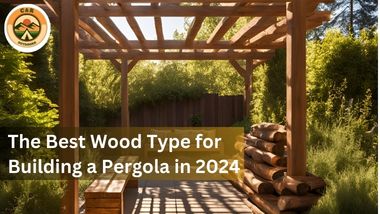When it comes to crafting the perfect playground, we often find ourselves in a bit of a pickle. One thing that usually stumps us is the concept of pea gravel in sandbox. Before we get some more into that, you might be scratching your head wondering, “What on earth is pea gravel?”
Well, here’s a quick scoop for you: Pea gravel are tiny pebbles about the size of…you guessed it, peas! They’re smooth and come in different colors which make them an attractive alternative to old-school sand. But before we swap out our shovels for rakes let’s weigh up whether this quirky substitute really does cut the mustard.
I must admit I was skeptical at first too – it’s not every day you hear “pea” and “gravel” strung together unless your kid is playing chef with their backyard finds. But hold onto your hats because this whole pea gravel versus sand debate just got interesting!
Here is an exciting article you might be interested in plants that repel frogs
Another article for you post frame foundation options

Selecting the Appropriate Type of Pea Gravel for Sandboxes
When it comes to selecting pea gravel for your sandbox, it is essential to choose the appropriate type that will provide optimal benefits and safety for children.
Look for pea gravel that has been specifically designed for use in playgrounds or sandboxes. This type of pea gravel is typically rounded and smooth, making it comfortable for children to play on.
Ensure that the pea gravel you choose is free from any sharp edges or debris. It should be properly washed and screened to remove any contaminants.
Additionally, consider the size of the pea gravel particles, as smaller particles tend to compact more easily while larger ones may not provide enough cushioning.
Benefits of Using Pea Gravel in a Sandbox
Using pea gravel as an alternative material in a sandbox offers numerous benefits.
Firstly, unlike sand which can retain moisture and become heavy when wet, pea gravel drains well and remains light even after rainstorms. This means that your child’s play area will dry quickly, allowing them to continue playing without delay.
Additionally, using pea gravel eliminates concerns about pests such as fleas or ants burrowing into the sand. These insects are less likely to infest a surface made of small rocks compared to traditional sand.
Another advantage of using pea gravel is its durability. Unlike sand that can blow away with strong winds or get easily displaced during playtime activities like digging or building structures, pebbles are much heavier and more stable.
Moreover, choosing pea gravel allows you flexibility in designing your sandbox since it comes in various colors ranging from natural earth tones like brown and tan to vibrant shades like red or blue.
Considerations When Installing Pea Gravel in a Sandbox
Before installing pea gravel in your sandbox, there are a few considerations to keep in mind.
Firstly, you will need to prepare the area by removing any existing sand or debris. Ensure that the site is level and free from any sharp objects or protrusions that could potentially harm children.
It is also crucial to create a solid barrier around the perimeter of the sandbox to prevent the pea gravel from spreading outside. You can use landscape timbers or other suitable materials for this purpose.
Maintenance Tips for Sandboxes with Pea Gravel
Maintaining a pea gravel sandbox is relatively simple compared to traditional sandboxes.
Regularly rake through the pebbles to ensure even distribution and remove any leaves, twigs, or other debris that might accumulate over time.
If necessary, adding additional pea gravel can easily restore its level surface after heavy use or erosion due to weather conditions. Inspect the surface regularly for signs of wear and replace it as needed.
Safety Precautions When Using Pea Gravel in Kids’ Sandboxes
While pea gravel provides many benefits, safety should always be a top priority when creating a play area for children. To ensure their safety while playing on pea gravel surfaces:
1. Supervise playtime: Always supervise children while they are playing in the sandbox.
2. Use appropriate clothing: Make sure children are wearing closed-toe shoes while playing on the pea gravel.
3. Check temperature: Be mindful of high temperatures as hot summer days can cause the stones to become very warm.
4. Install proper drainage: Adequate drainage helps prevent the accumulation of water which could make surfaces slippery.
5. Regular inspections: Inspect often for sharp edges or broken pieces and promptly address any issues found.
Playing Ideas and Activities on a Pea Gravel Sandbox
Pea gravel opens up an array of exciting play possibilities in your backyard! Here are some ideas to get your child’s imagination flowing:
1. Treasure Hunt: Bury small toys or treasures for your child to dig up.
2. Construction Zone: Provide toy construction equipment and encourage building structures with pea gravel.
3. Sensory Play: Fill buckets or containers with pea gravel and let children explore its texture using their hands or tools.
4. Car Racing Track: Create tracks in the pea gravel for little cars to race on.

Purchasing Quality and Safe Pea Gravel for Sandbox Use
When purchasing pea gravel, ensure you buy from reputable suppliers who specialize in playground materials. Look for safety certifications such as ASTM International standards specific to playgrounds.
Final Thoughts
Using pea gravel in a sandbox provides numerous benefits and can enhance the play experience for children. Its drainage properties, durability, and pest-resistant nature make it an excellent alternative to traditional sand.
Remember to consider safety precautions when using pea gravel in kids’ sandboxes, supervise playtime, provide appropriate clothing, check temperature conditions, install proper drainage systems, and regularly inspect the surface for any potential hazards.
So go ahead and transform your backyard into an exciting play area by incorporating safe and vibrant pea gravel into your sandbox!
If you found this article exciting, here is another great read: pregnancy camping
We also found this great pick for you: pull behind slit seeder
FAQs On pea gravel in sandbox
Q: What is pea gravel?
A: Pea gravel is a type of small rounded stone that is commonly used in landscaping and construction projects. It is typically made from natural rocks that have been mechanically crushed and sorted into various sizes.
Q: Can pea gravel be used in sandboxes?
A: Yes, pea gravel can be used as an alternative to sand in sandboxes. It provides a different texture and can be less messy than traditional sand. Plus, it adds a unique aesthetic touch to your rock box.
Q: Why would someone use pea gravel instead of sand in a sandbox?
A: There are several reasons why someone might choose to use pea gravel instead of sand in a sandbox. One reason is that pea gravel doesn’t stick to your skin or clothes as much as sand does, making it a cleaner option. Additionally, pea gravel doesn’t hold moisture like sand does, so it won’t get moldy or attract animals.
Q: Where can I buy pea gravel for my sandbox?
A: You can usually find pea gravel at home improvement stores, such as Home Depot or Lowe’s. Additionally, many local landscaping supply companies or garden centers may carry pea gravel. Be sure to check with your local suppliers to find the best option for you.
Q: How much pea gravel do I need for my sandbox?
A: The amount of pea gravel you will need for your sandbox will depend on the size and depth of your sandbox. As a rough estimate, you can calculate the volume of your sandbox in cubic feet and then multiply that by the weight of pea gravel per cubic foot. This will give you an idea of how much pea gravel you will need for your project.
Q: Is pea gravel safe for children to play in?
A: Yes, pea gravel is generally considered safe for children to play in. It does not contain any toxic substances and is non-allergenic. However, it is important to always supervise young children while they are playing in the sandbox, regardless of whether you use pea gravel or sand.
Q: Will pea gravel damage my patio?
A: Pea gravel is generally considered safe to use on patios, as long as you take some precautions. It is a good idea to place a layer of landscaping fabric beneath the gravel to help prevent it from sinking into the soil or causing any damage to the patio surface. Additionally, make sure to regularly sweep or hose off the patio to keep it clean.
Q: Can you build sandcastles with pea gravel?
A: No, pea gravel is not ideal for building sandcastles. Its small pieces don’t bind together well, unlike sand. However, pea gravel can still be fun to play with and offers other creative possibilities, such as building rock structures or creating artistic patterns in the sandbox.
Q: Does pea gravel require any maintenance?
A: Pea gravel is a low-maintenance option for a sandbox. However, you may need to periodically rake or level the gravel to keep it even and prevent any uneven areas from forming. Additionally, if you notice any debris or dirt in the pea gravel, you can use a hose to rinse it off.
Q: Can animals be attracted to pea gravel in a sandbox?
A: Since pea gravel doesn’t hold moisture like sand does, it is less likely to attract animals. However, some animals may still be attracted to the sandbox if they are looking for food or a place to dig. To deter animals, consider placing a lid on your sandbox when it’s not in use or using a sandbox with holes in the bottom to allow for drainage.

